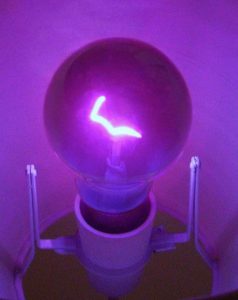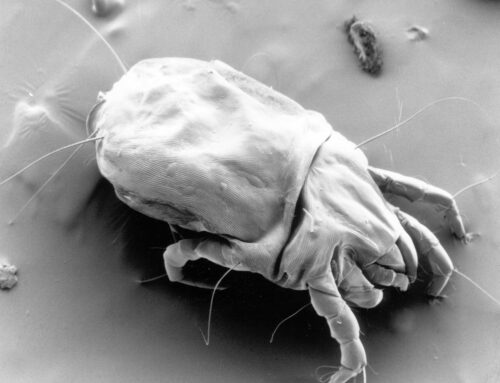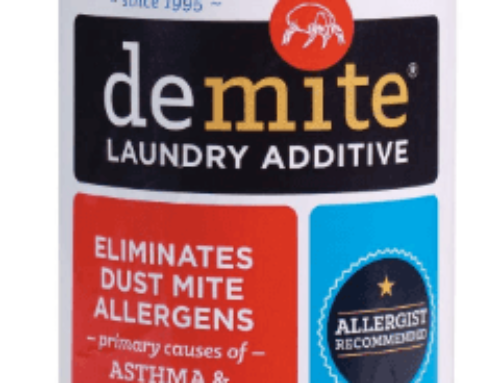Table of Contents
If you have dust mites in your home, you could be suffering from the allergic symptoms caused by the allergen. Naturally, you’ll want to reduce the dust mites population and thus, alleviating the allergic symptoms.
UV light is often mentioned as a means to kill dust mites but questions remained on its efficacy and safety in doing so. Before you start investing in expensive UV lights, read this article to have a better idea of what you’re doing when applying UV light to get rid of dust mites.
What Is UV Light
UV or ultraviolet light refers to a specific spectrum of electromagnetic rays produced by the sun. While UV light occurs naturally, it can be reproduced with a UV light tube. The term UV is used in general but there are in fact 3 sub-types of ultraviolet light.
Types of UV light include UV-A, UV-B, and UV-C. In natural sunlight, UV-A is the predominant component. It is associated with tanning and is used to treat certain forms of skin diseases. UV-B is notorious for contributing to skin cancer in the event of over-exposure.
The type of UV light that is of interest here is UV-C. It has a wavelength of 253.7 nm and is specifically used for germicidal irradiation. Besides being used to kill microorganisms like bacterias and viruses, UV-C has been suggested as a remedy in killing dust mites.
Is UV-C Light Effective In Killing Dust Mites?

The science behind using UV-C in killing dust mites is leveraging on the effect of germicidal irradiation where the DNA and the cellular functions of dust mites are destroyed through exposure. While UV-C is effective in killing much smaller microorganisms, the question is, is it equally effective in killing dust mites.
Although dust mites are not visible to human eyes, an adult mite typically measures 0.3 mm (0.01 inches), which is considerably huge compared to bacterias and viruses.
To understand the effect of UV-C on the mortality of dust mites, researchers from the Institute for Medical Research, Malaysia has conducted a study using UV lamps. In the study, dust mites are exposed to UV-C with a combination of various distances and durations.
The study found that the highest mortality rate in D. pteronyssinus and D. farinae is where the UV lamp is placed 10 cm away for a period of 60 minutes. As the distance increases and exposure duration decreases, the mortality rate drops.
While the efficiency of UV-C in killing dust mites is highly dependent on the intensity and duration of exposure, the study found that UV-C is highly effective in preventing dust mites egg from hatching. It is believed that UV-C penetrates the cells of dust mites eggs easily and impair the hatching process.
How To Kill Dust Mites At Home With UV-C Light
Dust mites are commonly found in mattresses, carpets or rugs in your home. It’s obvious that killing all the dust mites with UV-C is impractical, as it involves a long period of close exposure of the UV-C source.
However, UV-C remains a great method to control the population of dust mites in your home. Its ability to prevent dust mites egg from hatching is key to reducing dust mites growth.
There are two ways to go about it when it comes to killing dust mites with UV-C light. The first option involves getting a UV-C sanitizer. It’s a portable wand-like tool that allows you to disinfect surfaces with a built-in UV-C light bulb.
Alternatively, you can get a UV vacuum cleaner that is specifically designed to kill dust mites. These vacuum cleaners have strong suction power, and a HEPA filter to trap the dust mites that have been removed from the surface. Some models have a vibrating mechanism to get hidden dust mites to the surface of the mattress.
Another option for killing dust mites with UV is to get an air purifier with UV light. The air purifier helps to remove dust mites that are floating in the air. Trapped in the filter, the mites are exposed to the UV for a long period and will perish in the process.
Is UV-C Safe?
While UV-C helps to reduce dust mites, there are concerns that exposure may lead to side effects. UV-C is harmful to humans and may even lead to cancer. However, UV-C from the sun is absorbed by the ozone layer.
Exposure to high-intensity UV-C can cause skin irritation, redness and burn. In some cases, direct exposure to UV-C can cause eye injury. When choosing appliances that use UV-C to kill dust mites, ensure that there are protective features that prevent direct exposure to UV-C.
Bottom Line
UV-C is helpful in killing dust mites. It’s also considerably safe with the right protective features. With that said, dust mites control requires regular cleaning of your home. Think of UV-C as part of the bigger strategy in reducing dust mites.
Have you tried using UV-C to eliminate dust mites in your home? Does it work for you? Share your thoughts in the comment below.
Related:
- Does Tannic Acid Kill Dust Mites? (Is It Safe?)
- Ultrasonic Dust Mite Controller – Does It Work?
- Best Robot Vacuum Cleaners For Allergies And Pet Hairs
- Best UV Vacuum Cleaners For Dust Mites
- How To Get Rid Of Dust Mites In Stuffed Animals




I know UV light can benefit lots of things but your article is amazing!!
Hi Sonja,
Glad you find the article helpful.
Cheers,
Kenny